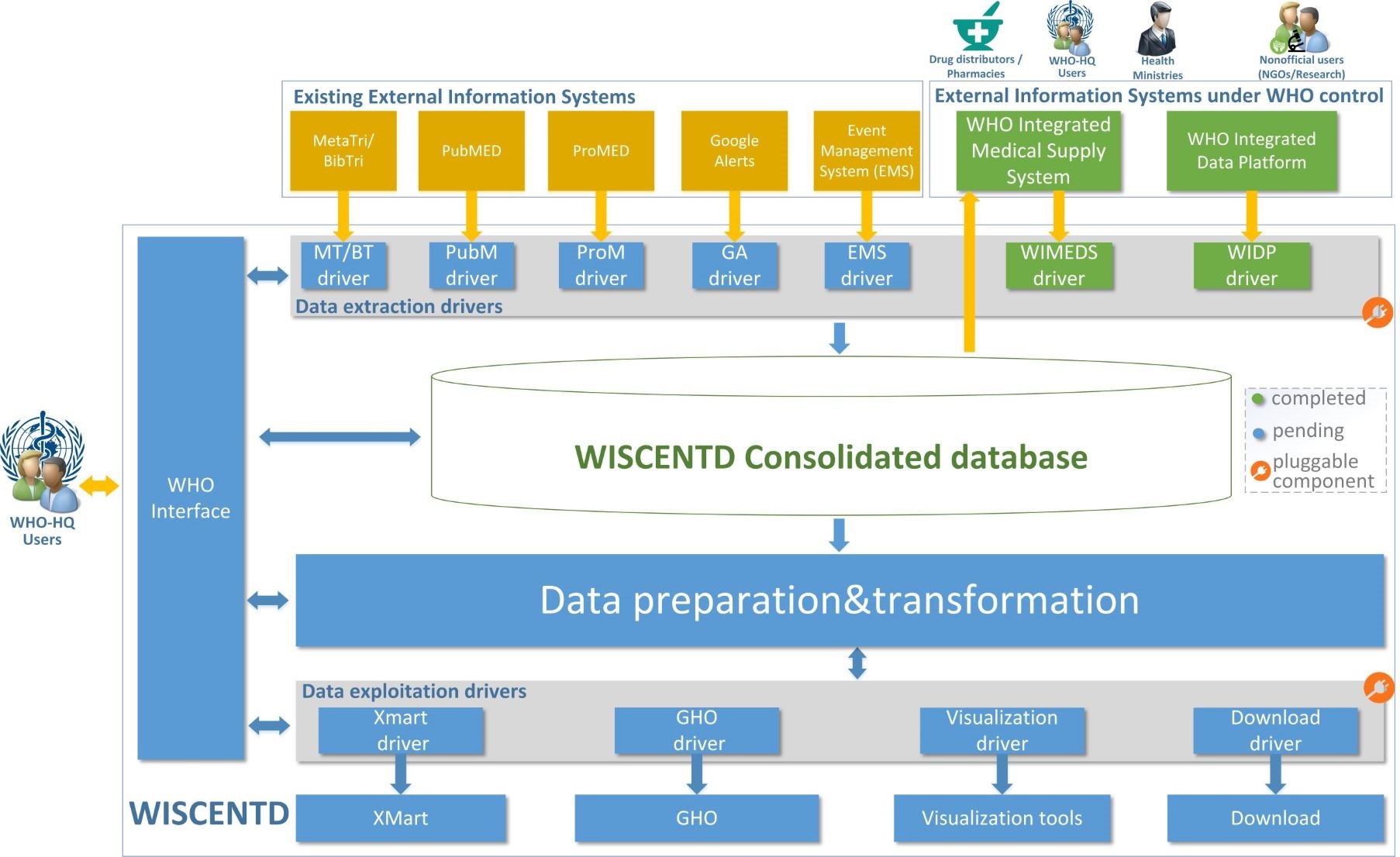Difference between revisions of "WISCENTD Consolidating Data (WICD)"
(Created page with "600px|thumb|right WISCENTD Consolidating Data (WICD) is a subsystem of WHO Information System to Control/Eliminate Neglected Tr...") |
|||
| Line 2: | Line 2: | ||
WISCENTD Consolidating Data (WICD) is a subsystem of [[WHO Information System to Control/Eliminate Neglected Tropical Diseases (WISCENTD)]]. | WISCENTD Consolidating Data (WICD) is a subsystem of [[WHO Information System to Control/Eliminate Neglected Tropical Diseases (WISCENTD)]]. | ||
| + | WICD has a role of consolidating NTD-related data coming from different data sources into a centralized database, and making it ready for further exploitation by different external tools. | ||
| + | WICD consists of four main layers. | ||
| + | == Data extraction drivers == | ||
| + | This layer considers a data extraction driver built for extracting data from each different type of data source. The complexity of data extraction drivers can go from more simple ones for traditional (relational) database sources (e.g., research databases or countries' information systems already in place), to more complex ones for semi-structured and unstructured sources (e.g., CSV/Excel files, | ||
| − | |||
== Consolidated database == | == Consolidated database == | ||
Latest revision as of 10:33, 14 November 2018
WISCENTD Consolidating Data (WICD) is a subsystem of WHO Information System to Control/Eliminate Neglected Tropical Diseases (WISCENTD). WICD has a role of consolidating NTD-related data coming from different data sources into a centralized database, and making it ready for further exploitation by different external tools.
WICD consists of four main layers.
Contents
Data extraction drivers
This layer considers a data extraction driver built for extracting data from each different type of data source. The complexity of data extraction drivers can go from more simple ones for traditional (relational) database sources (e.g., research databases or countries' information systems already in place), to more complex ones for semi-structured and unstructured sources (e.g., CSV/Excel files,
